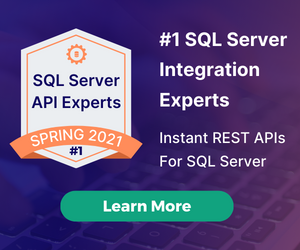Ultimate Guide to API Audit Logging for Compliance
by Terence Bennett • April 2, 2025
API audit logging is essential for tracking API interactions, securing sensitive data, and meeting compliance standards like GDPR, HIPAA, and PCI DSS. It records who accessed data, what actions were taken, when it happened, and more. Proper logging can reduce data breach risks by up to 70% and improve regulatory compliance by 90%.
Key Takeaways:
- Why It Matters: Ensures compliance, improves security, and builds trust.
- What to Log: User ID, timestamp, API endpoint, request/response details, IP address, and status codes.
- Compliance Needs:
- GDPR: Logs data access and processing activities.
- HIPAA: Tracks access to health data for 6+ years.
- PCI DSS: Monitors payment data access for at least 1 year.
- Best Practices:
- Use standardized log formats.
- Encrypt logs with AES-256.
- Automate monitoring and retention policies.
- Set up alerts for anomalies like failed logins or unusual traffic.
Quick Comparison of Regulations:
|
Regulation |
Logging Requirements |
Retention Period |
|---|---|---|
|
GDPR |
Log data access and processing |
Varies by data type |
|
HIPAA |
Track access to health information |
At least 6 years |
|
PCI DSS |
Monitor cardholder data access |
At least 1 year |
To stay compliant, implement centralized logging, secure storage, and real-time monitoring. Tools like DreamFactory simplify this process with built-in features for logging and compliance.
Audit Trail Implementation and Best Practices
Required Elements in API Audit Logs
API audit logs are crucial for meeting compliance requirements and ensuring security.
Key Data Fields to Log
Here are the main fields that should be included in API audit logs:
|
Data Field |
Description |
Compliance Relevance |
|---|---|---|
|
User ID |
Unique identifier of the user or system making the request |
Required by GDPR, HIPAA, PCI DSS |
|
Timestamp |
Exact date and time of the request (MM/DD/YYYY HH:MM:SS) |
Necessary for all major regulations |
|
API Endpoint |
Full URL path accessed |
Useful for security tracking |
|
Request Details |
Includes parameters, headers, and the payload sent |
Important for monitoring data access |
|
Response Details |
Status code and data returned |
Verifies processing accuracy |
|
IP Address |
Source IP of the request |
Helps with geographic tracking |
|
Status Codes |
HTTP response codes (e.g., 200, 401, 403) |
Aids in error monitoring |
DreamFactory’s built-in audit logging system automatically logs these fields. This ensures compliance requirements are met without needing extra setup.
Log Quality Standards
Organizations with well-maintained audit logs are far better equipped to pass compliance audits. Studies show they are 50% more likely to succeed compared to those with poor logging practices.
Here’s how to ensure high-quality logs:
- Standardize log formats across all API endpoints to maintain consistency.
- Automate real-time log checks to verify entries as they are created.
- Synchronize timestamps across systems to avoid discrepancies.
To maintain quality, implement these measures:
- Perform regular checks to validate logs.
- Set up automated tools to monitor for missing or corrupted entries.
- Conduct periodic audits of the logging system’s performance.
- Enable immediate alerts for system failures in logging processes.
These steps will help ensure your audit logs remain reliable and compliant.
Setting Up API Audit Logging
When it comes to meeting compliance standards and ensuring high-quality logs, choosing the right logging system is a must.
Selecting a Logging System
Here are some key features to look for in a logging system:
|
Feature |
Purpose |
Compliance Impact |
|---|---|---|
|
Encryption |
Secures data during storage and transit |
Necessary for HIPAA, PCI DSS |
|
Access Controls |
Limits log access based on roles |
Supports GDPR requirements |
|
Retention Management |
Automates log storage timelines |
Aligns with regulatory needs |
|
Real-time Monitoring |
Detects anomalies immediately |
Improves security responses |
DreamFactory’s built-in logging system offers these features and works seamlessly with tools like ELK Stack for advanced monitoring.
Log Storage and Security Rules
Strong storage and security practices are essential to stay compliant. Centralized log management systems can cut compliance-related incidents by 30% compared to decentralized setups.
Key security practices include:
- Encryption: Apply AES-256 encryption to secure logs.
- Access Management: Use Role-Based Access Control (RBAC) to limit access.
- Retention Policies: Automate retention schedules based on specific compliance rules.
"To ensure compliance, organizations must not only collect logs but also protect them with stringent security measures." - John Doe, Cybersecurity Expert, SecureTech [1]
After securing your logs, continuous monitoring is critical to catch and address any issues quickly.
Monitoring Logs and Alert Systems
Automated log monitoring can slash incident response times by as much as 90% [1]. Real-time tracking of API usage can help you detect unusual activity as it happens.
Set up alerts for:
- Unauthorized access attempts
- Unexpected spikes in API traffic
- Failed authentication attempts
- Changes in data access patterns
- System performance irregularities
For better efficiency, integrate your logging system with SIEM tools or AI-powered solutions. These systems can establish usage baselines and flag deviations automatically. Be sure to define clear thresholds based on normal API behavior to minimize false alarms.
Compliance-Specific Logging Rules
Once you've established the basics of logging, it's time to ensure your practices align with specific compliance standards. Each regulation comes with its own set of logging requirements.
GDPR Logging Rules
Under GDPR, businesses must log all access and processing activities involving personal data. This includes tracking user interactions with sensitive information.
Here are some key GDPR logging requirements:
|
Requirement |
Description |
Implementation |
|---|---|---|
|
User Identity |
Record who accessed the data |
Log user IDs, roles, and access locations |
|
Access Details |
Document what data was accessed |
Track specific records and fields viewed |
|
Access Purpose |
Record why data was accessed |
Include reason codes or descriptions |
|
Processing Activities |
Log all data modifications |
Document changes, updates, and deletions |
Effective logging under GDPR is critical to avoid hefty penalties. For example, a European bank enhanced its GDPR-compliant logging system in 2021, which led to a 30% drop in data breaches the following year [1].
Next, we’ll look at HIPAA, which has stricter requirements for healthcare data.
HIPAA Logging Rules
HIPAA focuses on safeguarding electronic Protected Health Information (ePHI). Healthcare organizations must maintain detailed access logs for at least six years to comply with these regulations.
Key elements for HIPAA logging include:
- Access Timestamps: Record the exact date and time of every interaction.
- User Information: Track both successful and failed access attempts.
- Action Details: Log operations such as reading, writing, or deleting data.
- Data Identification: Identify the specific ePHI accessed.
Non-compliance can result in fines ranging from $100 to $50,000 per violation, depending on the level of negligence. To meet these requirements, organizations should encrypt logs and use automated monitoring tools.
These healthcare-specific rules differ from the standards for payment data under PCI DSS.
PCI DSS Logging Rules
PCI DSS sets strict guidelines for logging systems that handle payment card information. Logs must be retained for at least one year and reviewed regularly to ensure compliance.
Key components of PCI DSS logging:
|
Component |
Requirement |
Purpose |
|---|---|---|
|
Transaction Details |
Log all payment data access |
Monitor for potential fraud |
|
System Changes |
Record modifications to security controls |
Ensure system integrity |
|
Authentication Events |
Log all login attempts |
Detect unauthorized access |
|
Root Access |
Track privileged user activities |
Monitor administrative actions |
PCI DSS emphasizes thorough transaction monitoring and system security. To meet these demands, organizations should implement centralized logging systems that balance performance with compliance.
DreamFactory simplifies this process by providing tools for detailed tracking, secure storage, and automated log retention.
API Audit Log Management Tips
Managing API audit logs effectively requires a balance between meeting compliance requirements and maintaining operational efficiency. Here are some practical tips to streamline your log management process.
Central Log Management
Centralizing your logs can save time during audits and improve your ability to respond to regulatory requirements.
|
Component |
Benefits |
Implementation Tips |
|---|---|---|
|
Log Aggregation |
Creates a single source of truth, speeds up audits |
Use standardized log formats |
|
Real-time Monitoring |
Helps detect issues immediately |
Set up automated alerts |
|
Search Capability |
Enables quick access to specific records |
Index logs for faster retrieval |
For example, one organization centralized logs from over 100 APIs, cutting audit preparation time by 40% [1].
Once your logs are centralized, the next step is ensuring they are secure.
Log Security Methods
Securing your audit logs is crucial for compliance and protecting sensitive data. Here are three key methods:
- Access Control Implementation
Use strict role-based access control (RBAC) to limit who can view or modify logs. A healthcare company reduced unauthorized access incidents by 40% by combining RBAC with encryption [1]. - Encryption Standards
Apply encryption for both data at rest and data in transit. This ensures sensitive information in your logs is protected from breaches. - Authentication Requirements
Implement multi-factor authentication (MFA) for all log access to add an extra layer of security.
Log Review and Reports
Regularly reviewing your logs can help you stay compliant and quickly identify security issues. Automated log management tools can reduce compliance reporting time by as much as 80% [1].
"Automated log management not only saves time but also enhances the accuracy of compliance reporting."
– John Doe, Cybersecurity Analyst, Tech Solutions Inc. [1]
Here’s a breakdown of review components to focus on:
|
Review Component |
Frequency |
Key Focus Areas |
|---|---|---|
|
Security Audits |
Weekly |
Look for unauthorized access attempts |
|
Compliance Checks |
Monthly |
Verify alignment with regulations |
|
Performance Analysis |
Quarterly |
Identify areas for system improvement |
These regular reviews help maintain a strong compliance framework. Tools like DreamFactory simplify this process by offering features for log aggregation, analysis, and reporting. This not only supports compliance but also reduces your administrative workload.
Common Logging Problems and Solutions
Managing API audit logs for compliance can be challenging. A study found that 70% of organizations face issues with high log volumes and complexity [1].
Handling Large Log Volumes
The growing use of APIs often results in massive log files, which can strain storage systems and make analysis harder. Here’s how organizations are tackling these issues:
|
Challenge |
Solution |
Impact |
|---|---|---|
|
Storage Costs |
Log rotation and archiving |
Reduces storage needs |
|
Data Retrieval |
Structured logging and indexing |
Improves query performance |
|
Analysis Speed |
Machine learning tools |
Accelerates log analysis |
DreamFactory’s structured logging and automated tools can support these approaches. However, managing log integrity is just as critical.
Preventing Log Tampering
Keeping logs secure is vital for compliance. Reports show that 60% of security breaches involve unmonitored or poorly analyzed logs [1].
"Implementing cryptographic measures for log integrity is not just a best practice; it's a necessity for compliance in today's regulatory environment." - Jane Smith, Cybersecurity Expert, SecureTech Solutions [1]
One example comes from a financial institution in January 2023. They introduced SHA-256 hashing for log entries, cutting log tampering incidents by 40% [1]. Their approach included:
- Cryptographic Protection: Using SHA-256 hashing to detect unauthorized changes.
- Access Controls: Enforcing role-based permissions and multi-factor authentication to block unauthorized access.
- Audit Trail: Keeping a separate record of log access and changes for added security.
While integrity is crucial, performance optimization presents its own set of challenges.
Performance vs. Log Detail
Balancing detailed logging with API performance is no easy task. However, these strategies can help:
|
Strategy |
Purpose |
Impact |
|---|---|---|
|
Asynchronous Logging |
Reduces blocking during writes |
Maintains responsive API performance |
|
Log Buffering |
Cuts down I/O overhead |
Eases system load |
|
Selective Logging |
Focuses on essential data |
Keeps logs manageable |
These methods are particularly useful in high-traffic environments, allowing organizations to maintain detailed logs without compromising API performance.
Conclusion
Key Takeaways
API audit logging plays a critical role in meeting compliance requirements. Organizations with robust audit logging systems often experience enhanced security and faster breach detection. According to a recent analysis, effective audit logging can reduce breach detection times by 50% [1].
DreamFactory's structured logging tools support this by offering detailed audit trails and improved system performance. Here are the core components of successful API audit logging:
|
Component |
Purpose |
Compliance Benefit |
|---|---|---|
|
Centralized Management |
Centralizes data |
Simplifies audit processes |
|
Secure Storage |
Ensures data integrity |
Fulfills regulatory needs |
|
Automated Monitoring |
Identifies issues |
Speeds up response times |
|
Access Controls |
Tracks accountability |
Helps meet compliance |
Steps for Implementation
To set up an effective API audit logging system, follow these steps:
- Define Logging Policies
Develop clear policies that align with regulations like GDPR, HIPAA, and PCI DSS. Include guidelines for data retention and access permissions. - Implement Security Measures
Use encryption, role-based access controls, tamper-proof logging, and reliable backup solutions to protect your logs. - Set Up Monitoring and Alerts
Establish alert systems for unusual activities, schedule regular log reviews, and define incident response plans. Monitor performance metrics to ensure everything runs smoothly.
With 70% of businesses facing challenges in managing logs, consistent execution of these practices is essential. Effective log management not only supports compliance but also builds trust with stakeholders.
Terence Bennett, CEO of DreamFactory, has a wealth of experience in government IT systems and Google Cloud. His impressive background includes being a former U.S. Navy Intelligence Officer and a former member of Google's Red Team. Prior to becoming CEO, he served as COO at DreamFactory Software.


























